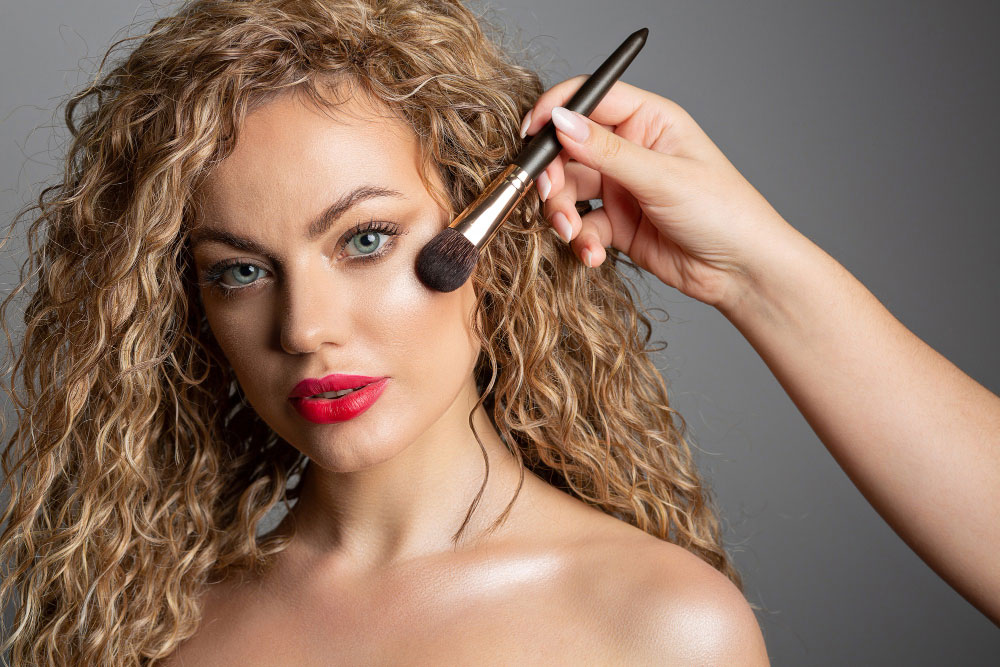The Science Behind Highlighters: Ingredients That Create Luminous Skin September 6, 2024

Highlighters have become a staple in beauty routines, providing that coveted radiant glow. But have you ever wondered what makes highlighters work so effectively? The secret to achieving luminous skin lies in the science behind the ingredients. In this article, we will explore the key ingredients found in highlighters and how they work together to give your skin that glowing, dewy look.
1. Mica: The Star Ingredient for Shine
Mica is one of the primary ingredients in most highlighters, known for its shimmering and light-reflecting properties. This naturally occurring mineral is ground into fine particles, which scatter light when applied to the skin, creating a luminous glow. The more finely milled the mica, the smoother and more natural the highlight will appear on the skin.
Mica is highly versatile and can be found in both powder highlighters and liquid highlighters. It is often mixed with other pigments to create different shades, ranging from icy whites to golden hues, allowing for customization based on skin tone.
2. Silica: Smoothing and Blurring
Silica is another common ingredient in highlighters, often used to give a soft-focus effect. This mineral helps create a smooth, flawless finish by diffusing light and minimizing the appearance of pores and fine lines. Silica works by filling in tiny imperfections on the skin’s surface, making it an essential ingredient for creating that airbrushed glow.
Additionally, silica helps absorb excess oil, making it a great addition to highlighters for people with oily skin, as it provides a matte yet luminous finish.
3. Titanium Dioxide: UV Protection and Brightness
Titanium dioxide is a white pigment commonly found in highlighters, especially those with lighter shades. It’s known for its brightening properties and is used to enhance the reflectivity of highlighters. This ingredient is also a physical sunscreen, meaning it provides some protection from harmful UV rays by reflecting them off the skin’s surface.
While it’s not a replacement for sunscreen, titanium dioxide in highlighters can add an extra layer of defense against sun damage while giving the skin a radiant glow.
4. Iron Oxides: Color and Pigmentation
Highlighters come in a wide range of shades to suit different skin tones, and iron oxides are responsible for providing the pigmentation in these products. Iron oxides come in various colors, such as red, yellow, and brown, and are mixed in different ratios to create everything from golden to rose-toned highlighters.
These pigments are essential for ensuring that highlighters complement a wide variety of skin tones, allowing everyone to achieve a customized, radiant look that suits their complexion.
5. Pearlescent Pigments: Enhancing the Glow
Pearlescent pigments, also known as pearl pigments, are commonly used in highlighters to add extra luminosity and iridescence. These pigments are made from layers of materials, including mica, that reflect light in different directions, creating a multidimensional glow.
The pearlescent effect gives highlighters that coveted sheen, making the skin look more radiant and dimensional. Depending on the type of pearlescent pigments used, the finish can range from subtle shimmer to intense, high-impact shine.
6. Emollients: Hydration and Blendability
For highlighters, especially cream and liquid formulas, emollients are key to ensuring smooth application and hydration. Ingredients like jojoba oil, shea butter, and glycerin are common emollients that help the highlighter glide onto the skin seamlessly, making it easier to blend.
Emollients also provide a moisturizing effect, which is especially beneficial for dry skin. They help maintain the skin’s moisture barrier while giving the highlighter a more natural, dewy finish.
7. Dimethicone: The Smoothing Agent
Dimethicone is a type of silicone that’s often included in highlighter formulas to create a silky, smooth texture. It acts as a skin protectant, forming a barrier on the surface of the skin to lock in moisture. This helps the highlighter sit beautifully on the skin without emphasizing texture or imperfections.
Dimethicone also ensures that the product stays in place for longer, making it ideal for people looking for long-lasting, flawless glow.
8. Glycerin: The Humectant Hero
Glycerin is a powerful humectant that draws moisture from the environment into the skin, helping to keep it hydrated throughout the day. In highlighters, glycerin helps create that fresh, dewy look by giving the skin a plump and moisturized appearance.
It’s especially beneficial in cream highlighters and liquid highlighters, as it ensures that the product blends seamlessly and gives the skin a healthy, luminous glow.
Conclusion
The glowing, radiant effect we all love in highlighters is not just about the shimmer – it’s the science behind the ingredients that makes it possible. From light-reflecting minerals like mica and titanium dioxide to hydrating emollients like glycerin and jojoba oil, each ingredient plays a crucial role in creating that perfect luminous finish. Whether you prefer a subtle glow or an intense highlight, understanding the ingredients in your highlighter can help you choose the right product for your skin type and desired look.
